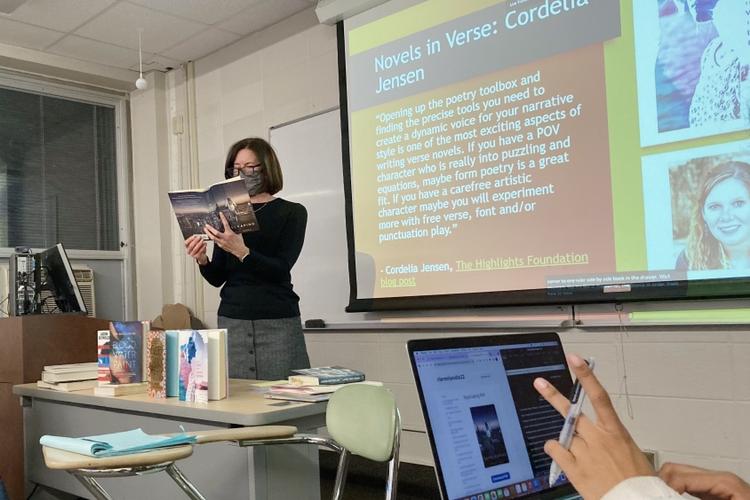Crafting Stories for All Ages—and Maybe a Career
I think every English major has been asked the question, “What are you going to do with that degree?” I certainly have heard it at every family gathering. Even my professors who were also once English undergrads ask me what I hope to do after graduation.
I always say that an English degree has the most open options in seeking professional work; I can really do anything. And while I do believe that’s true, I also say it to avoid giving one definitive answer. One issue about having so many options is that it’s hard to choose just one. So I made it my goal as a part of the Creative Writing concentration at Arcadia to try as many different types of writing as I could to see what type of work might interest me. And the University has certainly supplied plenty of opportunities to explore.

This semester, I am taking a course called Writing For Children and Young Adults. We learn how to tailor our writing for different age groups and levels of reading skills. From picture books to young adult novels, we practice each week with exercises and workshopping submissions to craft appropriate stories for our intended audiences. We also have been reading from a selection of works that span the range of children’s books. Children’s literature has been expanding the past two decades or so; different levels of reading have been established to best suit all kinds of readers. Instead of jumping from Dr. Seuss to J.R.R. Tolkien, there are more steps in between to help readers learn and enjoy stories at their own pace.
I decided to focus my work in this class as a chance to learn how to write for younger kids. For my first submission, I tried writing a set of picture books. Reading my own pieces, as well as some of my classmates’ sweet stories, was as adorable as you might be able to imagine. But after that first assignment, I settled on the “easy reader” level—also called early readers—aiming at readers from ages 4-7 who are just starting to read on their own. These kinds of books use simple sentences and are highly illustrated, but are more mature than a picture book.
It’s been a challenge figuring out the appropriate vocabulary and syntax for such young readers. I can’t exactly write in my typical advanced academic style. But it’s been an extremely enjoyable learning process.
It’s useful to have guidance in how to write your ideas properly, but it’s also useful to know what you can do with them once they’re written. We learn beyond just the craft and get a feel for what the professional field is like.
– Brigid Whelian
Professor Sibson is a published author herself, and so in addition to teaching us ways to write children’s stories, she has also been teaching us how to navigate the world of agents, editors, and publishers. This was one of the reasons I had been interested in taking her class. It’s useful to have guidance in how to write your ideas properly, but it’s also useful to know what you can do with them once they’re written. We learn beyond just the craft and get a feel for what the professional field is like.
As we are coming near the close of the Fall 2021 semester, I’m glad to have had this class in my schedule. It has been exactly the type of new writing experience I look for when choosing electives. It is a unique topic (and getting to read picture books instead of Shakespeare for class has been a nice change of pace). When people ask me what I want to do as an English major, I have a new possibility to add to an ever growing list of answers. I definitely have enjoyed writing for children.



